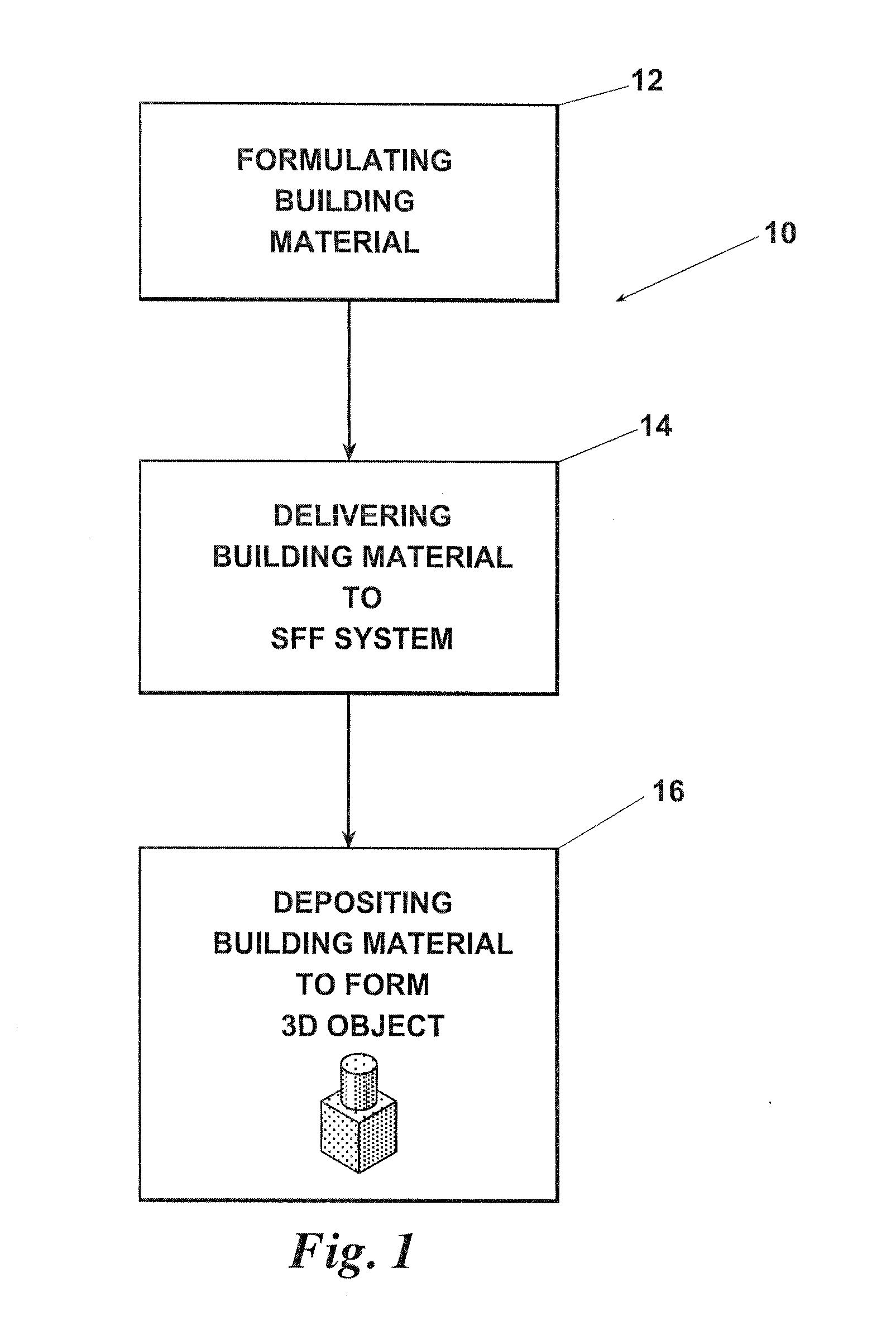Process for Making Three Dimensional Objects From Dispersions of Polymer Colloidal Particles
a technology of colloidal particles and dispersions, applied in additive manufacturing, manufacturing tools, manufacturing processes, etc., can solve the problems of unsuitable broader biological and/or medical applications, limited feedstock to photocurable materials, and unfavorable material properties,
- Summary
- Abstract
- Description
- Claims
- Application Information
AI Technical Summary
Benefits of technology
Problems solved by technology
Method used
Image
Examples
example 1
[0036]The polymer acrylic latex with average particle size of 1 micron and MFT of 10 degree C. was vigorously agitated prior to experiment at ion for 10 min. followed by sonication for 5 min. A dilute sodium alginate solution was prepared by dissolving sodium alginate in DI water to concentration. The dilute sodium alginate solution (0.5˜2 wt %) was added to the latex suspension and vortexed for 10 min. The suspension was then magnetic stirred for 2 hours. Finally, the suspension was concentrated into desired solid content (Φlatex) by centrifuge. The process was repeated three times to ensure the latex was restabilized by alginate. The calculated amount of sodium alginate was then added into concentrated latex polymer and the suspension was then vigorously vortexed for 15 min. Finally, a building material was formed with solid loading ranging from 40˜55 wt % and sodium alginate concentration ranging from 2˜5 wt %.
example 2
[0037]A CaCO3 suspension was added into a concentrated polymer latex prepared according to the method described in Example 1, mixed and vortexed for 15 min. A fresh aqueous GDL solution was then added to the suspension and vortexed for 15 min. to initiate gelation. Finally, a building material was formed with solid loading ranging from 40˜55 wt % and sodium alginate concentration ranging from 0.2˜1 wt %.
example 3
[0038]The calculated amount of Pluronic F127 was first dissolved in distilled water at a temperature of 4 degree C. Next, an appropriate volume fraction of acrylic latex powder was added to the solution and a stable suspension (φ=0.47˜0.62) was formed. The suspension was then vigorously homogenized for 5 min. followed by processing with a three-roller mill for 5 minutes. The suspension was brought to room temperature and particle gelation was induced. Finally, a building material was formed with solid loading ranging from 40˜65 wt % and pluronic concentration ranging from 6˜10 wt %.
PUM
| Property | Measurement | Unit |
|---|---|---|
| size | aaaaa | aaaaa |
| colloidal dispersion | aaaaa | aaaaa |
| concentration | aaaaa | aaaaa |
Abstract
Description
Claims
Application Information
 Login to View More
Login to View More - R&D
- Intellectual Property
- Life Sciences
- Materials
- Tech Scout
- Unparalleled Data Quality
- Higher Quality Content
- 60% Fewer Hallucinations
Browse by: Latest US Patents, China's latest patents, Technical Efficacy Thesaurus, Application Domain, Technology Topic, Popular Technical Reports.
© 2025 PatSnap. All rights reserved.Legal|Privacy policy|Modern Slavery Act Transparency Statement|Sitemap|About US| Contact US: help@patsnap.com



